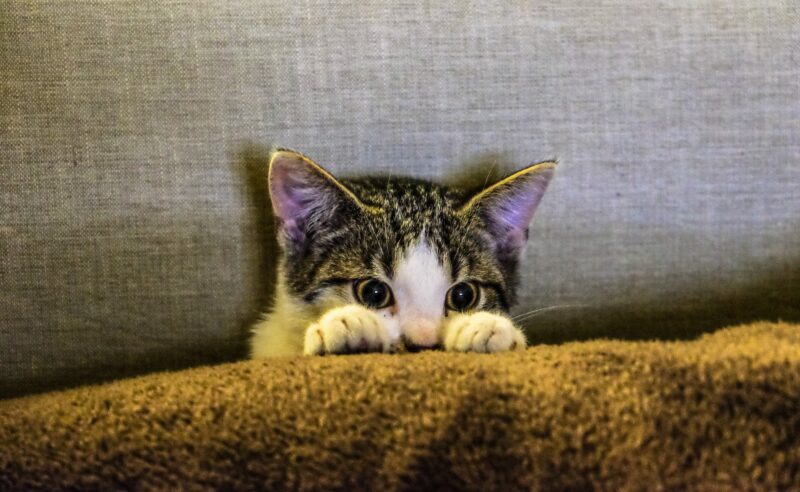Cats being those mysterious and free-spirited beings, have always held a special place in the hearts of pet lovers. Their soft purrs, playful antics, and charming quirks make them a delightful addition to any family.
Our feline friends have a wide range of behaviors that are influenced by their natural instincts, individual personalities, and environmental factors. Understanding common cat behaviors can help you better interact with and care for your feline companion. Behavioral problems in felines can arise for various reasons, including stress, medical issues, or a lack of proper training and socialization.
Here are some common behavioral issues in your furrball and how to fix them:

Soiling outside the litter box
Our whisker friend may avoid using the litter box if they find issues with the litter itself or the box’s features. They could also associate some unpleasant experiences at or near the box, or they find it difficult to gain access to it. This behavior is also possible if meow pals are frightened or there’s tension between them. Keep your pussycat’s litter box clean by scooping it several times a day, and clean it thoroughly every two weeks. Use unscented litter in an uncovered box and place it in a quiet area. Consider having more than one box with different litters to find what your feline friend prefers.
Inappropriate Scratching
When your pawed pals scratch furniture, it’s because they’re either marking their territory, playing, or keeping their claws sharp. While it’s a normal thing for them, messing with their favorite spots might make them feel a bit uneasy about their space, possibly leading to some acting out.Spread various sturdy scratching posts throughout your home. Make it enticing by adding catnip, hanging toys, or placing treats nearby. When your kitten uses the post, shower them with praise and treats. Reinforce the message by petting them while they’re at it—stroking their back encourages them to knead their paws.
Aggression
If your fluffy pal is acting aggressively, it could be due to various reasons like stress, pain, or hormonal changes. When scared, they might hiss or crouch as warning signs. Sometimes, it’s just playful behavior, but they might get too excited and not realize what behavior is acceptable. If your tabby shows aggression, reach out to your vet immediately. Resist the urge to touch or approach, even if you have a strong bond. Prioritize safety and let the vet or animal behaviorist guide you on handling the situation.
Excessive Meowing
When cats meow, it’s like they’re talking to us. They might meow to greet you, ask for food, or grab some attention. If they meow a lot during the day, it could be a sign they’re in pain. Crying in the litter box? That’s a clue they might be uncomfortable while doing their business. When your mouser meows for food, don’t give in right away. If it’s attention they’re after, wait for them to be quiet before responding. To keep them entertained while you’re around, engage in a five-minute lure-chasing session every few hours. If the meowing seems excessive or they appear distressed, consult your vet.
Urine Spraying or Marking
Our four-legged friends use their pee to communicate, especially to mark their territory, when they’re feeling insecure, or in the mood for a mate. If there’s tension, lots of cats around, or changes in routine, they might mark their territory more. Health issues like infections, inflammation, bladder stones, stress, or tumors can also lead to cats spraying, or having trouble urinating. Consider getting your kitty neutered or spayed. Tidy up the sprayed spots with an enzymatic cleaner. Keep windows, blinds, and doors closed to shield your indoor tabby from glimpsing other neighborhood felines. If the issue persists, reach out to your vet for appropriate advice.
Hiding or Avoidance
It’s normal for our furry friend to hide, but if they’re doing it too much, it could be a problem. If your paw pal hasn’t come out to eat for a day, it’s a red flag. Our whisker wizards usually hide when they’re not well or stressed, so a vet visit might be needed. Other reasons they could be hiding include their instinct, unsafe feeling, anxiety, or even pregnancy. Don’t scare or punish your hiding feline. Instead, use gentle methods like restricting access, using scents they dislike, or placing uncomfortable surfaces in their hiding spots. Refrain from startling or yelling, as it can harm your relationship with them.
Overgrooming
Cats groom to stay stylish and to feel relaxed, but too much grooming can harm their skin. If your purrpal is obsessively licking or has bare, raw spots in their body, it could be a sign of pain, stress, or anxiety. Check with the vet to rule out skin issues and get to the root of the problem. If your fur baby seems stressed, especially due to changes like a new routine or the presence of another pet, comfort them by playing with them and creating a relaxed atmosphere.
Pica (Eating Non-Food Items)
Pica in cats is when they chew incessantly on inappropriate or non-food items like plastic, fabric or paper. This behavioral issue often shows up more in younger pussycats which is triggered by boredom, loneliness, or stress. While it might not always mean a health problem, the outcomes can be serious, like blockages in their stomach, damaged belongings to the fur parents, and a strained bond between you and your furball. Help your fluffy friend ditch the non-food munchies by giving them a balanced diet, loads of playthings, and eliminating tempting chew targets. Swap out hazardous items with cat-friendly toys and ensure they get around 30 minutes of play every day.

It’s important to note that these behaviors can have various underlying causes, including medical issues, stress, boredom, or lack of proper training. If you’re dealing with persistent behavioral problems in your purr-fect baby, consulting with a veterinarian or a certified animal behaviorist can help identify the root cause and develop a suitable plan for addressing the issue.









